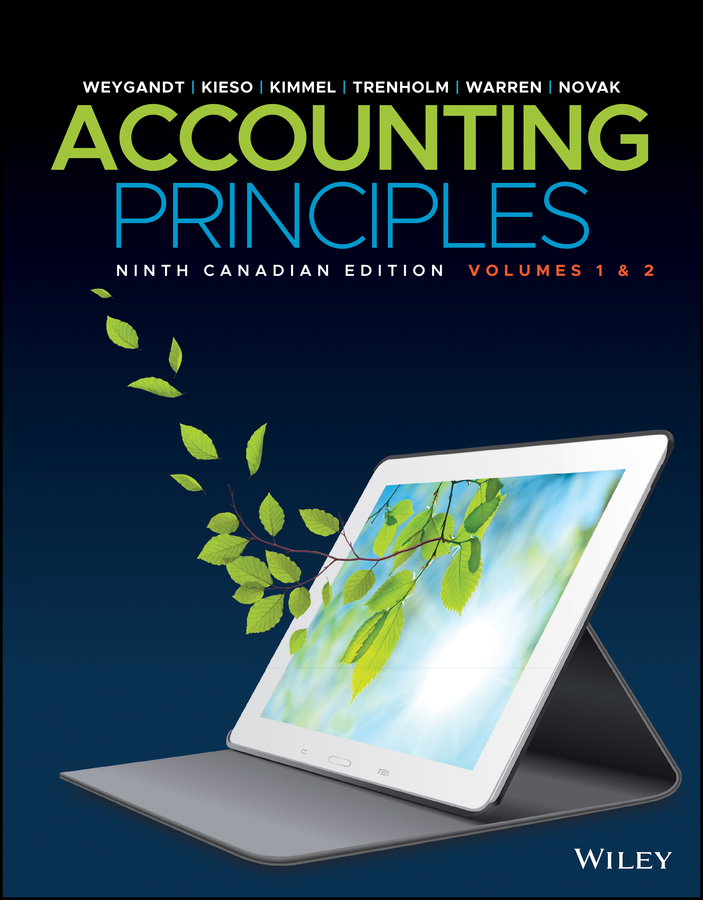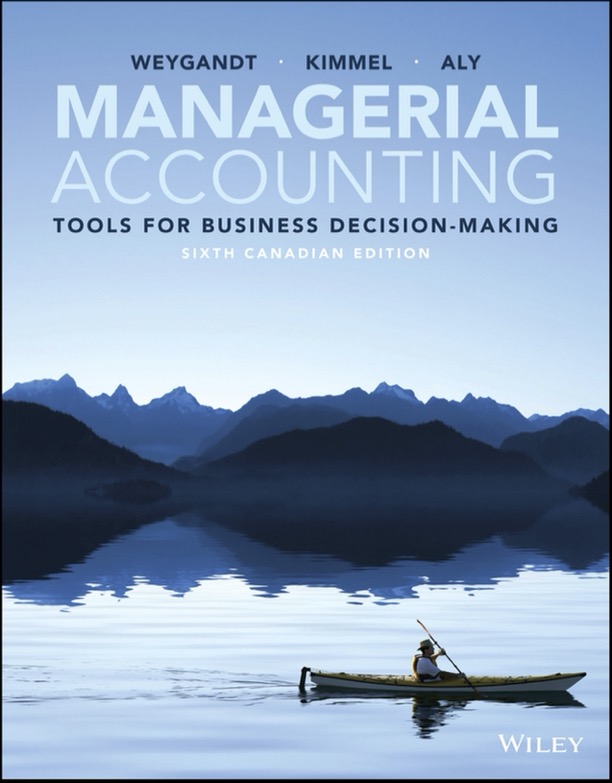Description: Failed sports drink company Biosteel has left some big-name creditors on the hook. The company owes over $400 million to creditors and its financial problems appear to be linked to its strategy of recruiting expensive professional athletes for its marketing efforts. Several NBA franchises are owed hundreds of thousands of dollars. TSN and Rogers Communications also have large receivables from Biosteel that may have to be written off.
Date: September 20, 2023
Source: cbc.ca
Link: https://www.cbc.ca/news/business/biosteel-creditors-list-1.6972536
Discussion points:
1) Have you ever tried Biosteel’s Sports drink? What did you think of the product?
2) What do you think of Biosteel’s marketing strategy?
3) Pages 8.13 and 8.14 of Wiley’s Financial Accounting: Tools for Business Decision-Making discuss the process for writing off bad debts. What is the journal entry you would make to record a write-off?









Jagger Russell, Gerrit Sierink, Rachid Nait-Aiss, Lauren Reid
1. We have tried bio steel, we saw it as an energy sports drink that was on the higher end of the market, a little more premium of a product because of the higher price.
2. The marketing strategy was good in theory but a little aggressive and they spent to much on advertising expense that they couldn’t pay back.
3. You need to debit allowance for expected credit losses and credit accounts receivable.
Evan Wood
1)
Yes we have tried it before. We found it was a healthier alternative to other popular sports drinks such as Gatorade or Powerade. It tasted pretty good, and it was comparable to the taste of the other products. It gave us comfort knowing that the sports drink was more healthy to consume than that of its competitors, which would be our typical choice of drink.
2)
We believe Biosteel’s marketing strategy was very good in the sense that they used athletes and quality brands to promote their sports drink. We also believe it was a poorly executed strategy, due to them continuing to try and promote their product with athletes and corporations despite their revenue being too low to afford it. They did not have adequate sales volume from these promotions to keep taking on more. There can be great benefits to this type of marketing strategy, but you need to ensure you have the sales to back it up.
3)
Figure out the title of your GL account to record losses, in some cases it can be titled “Allowance for uncollectible accounts” or something similar to that. Wiley uses “Allowance for Expected Credit Losses”. Locate “Accounts Receivable”
In order to write off the bad debt, we would put the date, then we would make a journal entry to debit “Allowance for Expected Credit Losses”, and credit our “Accounts Receivable”. We would then add a description such as: “To record uncollectible debt”.
Evan Wood
Xander Ries
Ahmed Amin
Natasha Imbeault
Emily Lake, Sage Jull, Maalik Boukouiss, Kenna Van der Pluijm
1. As a group half of us have tried Bio Steel Sports drink and half of us have not. One member of our group plays on a sports team that is sponsored by Bio steel meaning they receive free drinks and water bottles in return for the team using their product publicly to help promote their company. Those in our group who have tried the product feel that it is not as good as Gatorade, Powerade, and other sports drinks on the market.
2. We think that Bio steel should come up with another marketing strategy because what they are doing is obviously not working. According to the article “In the three months up to the end of March, the company sold $24 million worth of product, court filings show. But those sales cost the company more than they took in, with $34 million in sales and marketing expenses, and another $34 million on advertising and promotion.” This shows how much money the company is in debt because of the huge amount of money that they are spending on their marketing strategies.
3. The allowance for expected credit losses is debited when recording a write-off since a write-off has no effect on the number of credit losses that are recorded by a company. The entry to record the write-off of an uncollectible account reduces both accounts receivable and allowance for expected credit losses. We would start with the date on the left then adding allowance for expected credit is in the debit column and accounts receivable would be in the credit column.
Evan Wood
1)
We have tried the Biosteel sports drink, and we all liked it a lot. We found the taste very comparable to that of its competitors. We found comfort in the fact it was a healthier alternative to Gatorade or Powerade, as those drinks typically have lots of sugar and chemicals in them.
2)
We thought Biosteel’s marketing strategy was good because they used many popular athletes and corporations to promote their sports drink brand. We do think it was improperly executed due to the costs overpowering the number of sales increase they sustained due to promotion. If a corporation tries to use prominent figures to promote their brand, they must have the sales to back it up or else they will end up owing lots of money to creditors, just like the article states. We believe that after the first few major promotions, they should have pivoted to a different strategy due to their high cost base.
3)
In order to write off the bad debt, we must first locate our GL account, typically titled “Allowance for Uncollectible Accounts”. In the case of the Wiley textbook, it is called “Allowance for expected Credit Losses”. Locate your Accounts Receivables account as well.
In order to record the write-off, the journal entry to make is to first add the date, then debit your “Allowance for Uncollectible Accounts”, and make a credit to “Accounts Receivable”.
Evan Wood
Xander Ries
Amin Ahmed
Natasha Imbeault
Evan Wood
1)
We have tried the Biosteel sports drink, and we all liked it a lot. We found the taste very comparable to that of its competitors. We found comfort in the fact it was a healthier alternative to Gatorade or Powerade, as those drinks typically have lots of sugar and chemicals in them.
2)
We thought Biosteel’s marketing strategy was good because they used many popular athletes and corporations to promote their sports drink brand. We do think it was improperly executed due to the costs overpowering the number of sales increase they sustained due to promotion. If a corporation tries to use prominent figures to promote their brand, they must have the sales to back it up or else they will end up owing lots of money to creditors, just like the article states. We believe that after the first few major promotions, they should have pivoted to a different strategy due to their high cost base.
3)
In order to write off the bad debt, we must first locate our GL account, typically titled “Allowance for Uncollectible Accounts”. In the case of the Wiley textbook, it is called “Allowance for expected Credit Losses”. Locate your Accounts Receivables account as well.
In order to record the write-off, the journal entry to make is to first add the date, then debit your “Allowance for Uncollectible Accounts”, and make a credit to “Accounts Receivable”. Finally, add a description detailing the Journal Entry.
Evan Wood
Xander Ries
Amin Ahmed
Natasha Imbeault
Connor Briand, Leah May, Aidan Hazen, Josh Gonsalves
1. We tried Biosteel and didn’t like how the sports drink tasted and that it was so expensive. We believe there are better substitutions for this product.
2. We think that Biosteel’s marketing strategy is overly aggressive. By putting so much money into partnerships with many different organizations and professional athletes, they have stretched themselves too thin and are not making enough revenue to compensate for this.
3. The process of writing off bad debts starts with recognizing that collection appears unlikely. Then each write-off needs to be formally approved by a manager in writing to make sure that no one is trying to hide theft. We would debit Allowance for Expected Credit Loses and credit Accounts Receivable.
Team 5 - Mia Cogger, Benkamin Michel, Sahil Kedia, and AJ Munch
1. all of us have tried biosteel and none of us seemed to enjoy it. We thought that the flavour wasn’t good, it tasted very watered down in comarrison to other beverages. we thought it wasn’t as good as it’s competitors either. I.E. Gatorage.
2. We think the marketing strategy was good to include high end atheletes and brands to sell their product for them in a sense. It has its benefits; however, they took it a bit too far and got too many of them to pick up their product causing them to go into debt. It worked for their competitor brands (like Gatorade) because they knew they could keep up and had to finances to do so.
3. The Journal Entry to record a write off would be to apply a debit to an account called “Allowence for Expected Credit Loses” this is the account that controls everything there is for write offs whether it is a debit or a credit. In this case we are working with a debit. Then apply a credit to your accounts recievable.
Breanne Wesselius, Avery Marr, Jagger Vandewiel, Graeme Maither
1. Most members of our group have tried Biosteel, and all enjoy the product. We agree that it is very similar to it’s competitors, such as Gatorade and Powerade. However, it is a healthier alternative.
2. We think that Biosteel has a excellent marketing strategy. Promoting their product with top professional athletes draws lots of attention to the product. However, they did not have a sufficient amount of sales to back up the expenses of the marketing. As the article states they now owe a substantial amount of money to the creditors. In theory, this strategy could’ve worked out in their favor, as it has for other sports drinks, but that is not the case.
3. To write off bad debits you must do so in a journal entry. Starting with a clear title and continuing to add the proper date. Then, debit “Allowances For Expected Credit Losses.” following that, credit “Accounts Receivable.” With your two totals subtract “Allowances For Expected Credit Losses” from “Accounts Receivable.” Leaving you with the carrying amount.
Christopher-James, Colby Cormier, Jamie Gallant, Mishael mathew
1. We’ve all tried Biosteel in the past and we all enjoyed it. 3 members of our team are part of the football team and, last year, Usport was sponsored by Biosteel so everyone in the team receive a shaker from them. The product is healthier than a competitor like Gatorade because there is less carbs and calories per serving.
2. At first, their marketing strategy seemed pretty solid because they we’re targeting athletes to promote their product. This is good because athletes are the most susceptible to buy and consume Biosteel. Like we said before, Usport was even sponsored by Biosteel last season so this shows the effort Biosteel made to target ahtletes. The problem is that when they realized they were generating enough revenue, they kept going and they didn’t change their strategy. This is where the situation started getting complicated for them because obviously their initial plan wasn’t going like they planned and they didn’t have any backup plan.
3. To write off the bad debt, you first need to find the Allowance for Uncollectible Accounts. The Accounts Receivable is also important in this situation. For the write-off, you apply debit your Allowance for Uncollectible Accounts, and credit the Accounts Receivable.
Lauren Hatheway, Andrew Little, John Christodoulou, Shristhi Kedia
1) Some of us have tried BioSteel’s sports drink, while some of us have never tried it or any of their other products. The people in our group who have tried it, said it’s really good. We have seen BioSteel drinks in grocery stores around different parts of Canada. Most of us have seen their products being used by other consumers, such as their plastic water bottles.
2) While we do see the benefits of having celebrities in the sports industry to promote their brand, we do not think their marketing strategy is very effective from seeing all the debt they are in. We feel as if they need to branch out more to partner with influencers/micro influencers through social media. A lot of brands receive a large amount of their income through celebrity and influencer endorsements, so possibly working with smaller influencers will be more beneficial and they will not have to spend as much money on bigger celebrities.
3) The process for writing off bad debts starts with finding the “Allowance for expected credit losses” and debiting the account. Then we need to credit the “Accounts Receivable” and further add a comment of description underneath the entry.
Morgan Milley, Brenden Donald, Calum Macdonald, Ethan Cushing
1. For us as a group several of us had tried Bio Steel, from sports for use of hydration mixes or just daily replenishments out of enjoyment for the taste. Two of us liked the taste and found it to be a great replacement for the higher calorie Gatorade or Powerade but noticed it can also be quite sweet if not mixed properly.
2. We believe Bio Steels marketing strategy was good due to the large rapid growth of the product but, also a bit ambitious for the size of the generally small new company. They reached out to several players and leagues for partnerships to market their product early on for contracts worth millions of dollars, that they now are unable to pay with the revenue they received.
3. The process to write off bad debts must be done in a journal entry with a clear title and date. The process begins with debiting “allowances for expected credit loss”, then by the crediting “accounts receivable”. Finally, to complete it, add a description to further detail the journal entry.
Morgan Milley, Ethan Cushing, Brenden Donald, Calum Macdonald
1. For us as a group several of us had tried Bio Steel, from sports for use of hydration mixes or just daily replenishments out of enjoyment for the taste. Two of us liked the taste and found it to be a great replacement for the higher calorie Gatorade or Powerade but noticed it can also be quite sweet if not mixed properly.
2. We believe Bio Steels marketing strategy was good due to the large rapid growth of the product but, also a bit ambitious for the size of the generally small new company. They reached out to several players and leagues for partnerships to market their product early on for contracts worth millions of dollars, that they now are unable to pay with the revenue they received.
3. The process to write off bad debts must be done in a journal entry with a clear title and date. The process begins with debiting “allowances for expected credit loss”, then by the crediting “accounts receivable”. Finally, to complete it, add a description to further detail the journal entry.
Morgan Milley, Ethan Cushing, Brenden Donald, Calum Macdonald
1. For us as a group several of us had tried Bio Steel, from sports for use of hydration mixes or just daily replenishments out of enjoyment for the taste. Two of us liked the taste and found it to be a great replacement for the higher calorie Gatorade or Powerade but noticed it can also be quite sweet if not mixed properly.
2. We believe Bio Steels marketing strategy was good due to the large rapid growth of the product but, also a bit ambitious for the size of the generally small new company. They reached out to several players and leagues for partnerships to market their product early on for contracts worth millions of dollars, that they now are unable to pay with the revenue they received.
3. The process to write off bad debts must be done in a journal entry with a clear title and date. The process begins with debiting “allowances for expected credit loss”, then by the crediting “accounts receivable”. Finally, to complete it, add a description to further detail the journal entry.